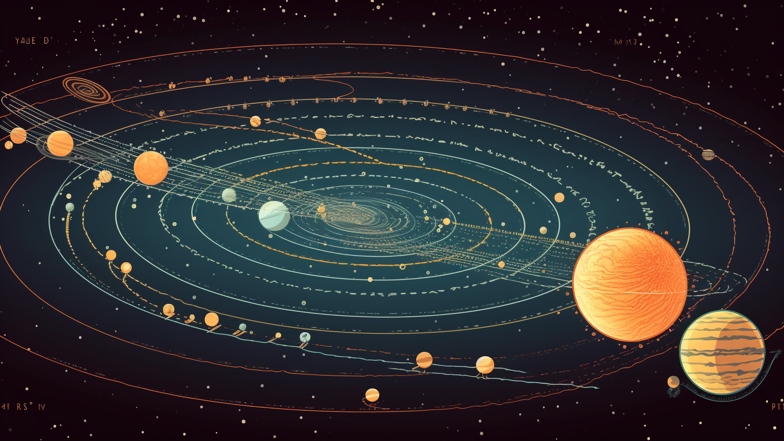
Astrogeology is the study of the geology of celestial bodies such as planets, moons, and asteroids in the solar system. It is an exciting and fascinating field that combines the knowledge of astronomy and geology to understand the geological processes that shape and transform these cosmic bodies. Astrogeologists use a range of tools and techniques to collect data about the different features of these bodies, including their atmospheres, surfaces, and interiors. Through their work, astrogeologists hope to uncover the history and secrets of the solar system, as well as gain a better understanding of the potential for life beyond Earth.
The History of Astrogeology
The study of astrogeology dates back to the early days of space exploration, when scientists first set foot on the Moon during the Apollo missions in the late 1960s and early 1970s. During these missions, scientists collected rocks and soil samples from the Moon's surface, which were then brought back to Earth for analysis. These samples helped scientists understand the composition and structure of the Moon, as well as its history and how it was formed.
Since then, astrogeology has come a long way, with numerous missions to other planets and moons in the solar system. For example, the Viking landers, which were sent to Mars in the 1970s, conducted experiments to study the planet's soil and atmosphere. In more recent years, rovers such as Spirit, Opportunity, and Curiosity have explored the Martian landscape and collected data on its geology and environment.
The Role of Astrogeologists
Astrogeologists play an important role in understanding the geology of the solar system. Their work involves using a wide variety of tools and techniques, such as remote sensing, spectroscopy, and geologic mapping, to analyze the surfaces of planets, moons, and asteroids. They are also involved in planning and designing missions, interpreting data collected from space, and developing new technologies to help us better understand celestial bodies.
One of the key goals of astrogeology is to trace the history of the solar system. By studying the geology of different celestial bodies, astrogeologists can piece together the puzzle of how the solar system was formed and how it has evolved over time. For example, the study of meteorites can provide insight into the earliest stages of the solar system, while the analysis of impact craters can reveal information about the frequency and intensity of impacts in the past.
Astrogeologists are also interested in understanding the unique features of different planets, moons, and asteroids. Each celestial body has its own set of geological processes and features, which can provide clues about its past and present conditions. For example, the presence of liquid water on Mars suggests that the planet may have had a warmer, wetter climate in the past, while the geysers on Enceladus, one of Saturn's moons, indicate the presence of subsurface liquid water.
Astrogeologists also play a crucial role in the search for life beyond Earth. By studying the geology and environment of different celestial bodies, astrogeologists can identify those that may have the potential to harbor life. For example, the search for habitable environments on Mars involves identifying areas where liquid water may have existed in the past or may still exist today. Similarly, the search for habitable moons around Jupiter and Saturn focuses on those with the potential for subsurface oceans.
Current Discoveries in Astrogeology
Recent discoveries in astrogeology have revealed exciting new insights into the solar system. For example, the New Horizons mission to Pluto discovered a landscape that is geologically active, with nitrogen ice glaciers and mountains made of solid water ice. Similarly, the Dawn mission to the asteroid Vesta found evidence of a once-volcanic surface, with lava flows and volcanic cones.
Recent exploration of Mars has also yielded significant discoveries. The Curiosity rover discovered evidence of a once-habitable environment on the planet, with a lakebed that could have supported microbial life. The rover also found organic molecules, which provide further evidence of the potential for life on Mars.
Looking Ahead
The future of astrogeology is bright, with numerous missions and projects planned in the coming years. For example, NASA's Mars 2020 mission will explore the Jezero crater on Mars, which is believed to have once been a lake environment. The Europa Clipper mission will study the moon's subsurface ocean, looking for biologically relevant chemicals and compounds. And the OSIRIS-REx mission will return a sample of the asteroid Bennu to Earth, providing new insights into the formation and evolution of asteroids.
Conclusion
Astrogeology is a fascinating and ever-evolving field that plays a crucial role in uncovering the secrets of the solar system. Through the study of planetary and celestial bodies, astrogeologists have gained a better understanding of the history and evolution of the solar system, as well as the potential for life beyond Earth. As new missions and discoveries are made, the field of astrogeology will continue to expand and deepen our understanding of the universe.
Comments
Post a Comment